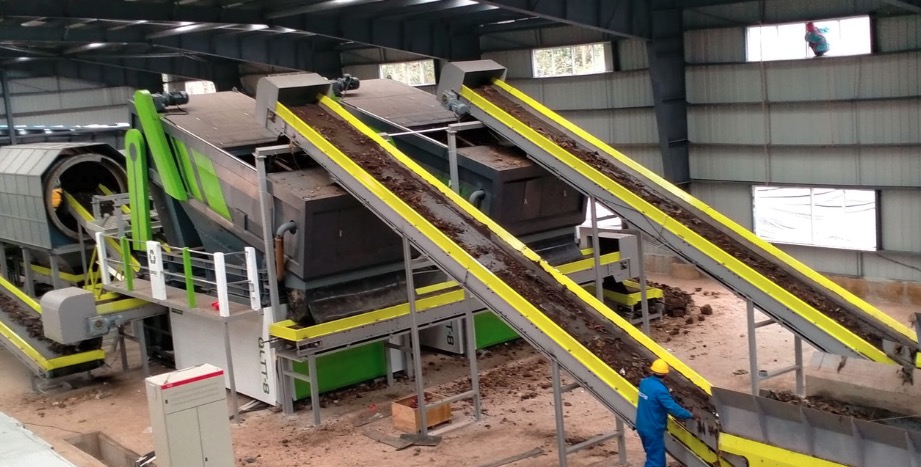 Time:2024-11-18
Time:2024-11-18
 Source:青绿环境
Source:青绿环境
Sorting decayed waste is a complex but necessary process that involves the coordinated operation of various equipment to achieve efficient and environmentally friendly waste management. Here is an introduction to the equipment needed for sorting decayed waste:

I. Pre-treatment Equipment
1. Excavators and loaders: Used to dig out decayed waste from landfills or accumulation areas and transfer it to the entrance of the waste treatment line.
2. Chain conveyor feeder: Capable of evenly and continuously feeding waste into subsequent processing equipment, ensuring the stable operation of the treatment line.
II. Screening and Sorting Equipment
1. Trommel screen: Through screens with different mesh sizes, it conducts preliminary grading based on the particle size of the waste, dividing it into oversize (large debris, undecomposed solids) and undersize (soil, small particle waste). This process helps to improve the accuracy and efficiency of subsequent sorting.
2. Magnetic separator: Used to separate iron and other magnetic metals from the screened material, achieving resource recycling and reuse.
3. Air classifier: Utilizing the principle of wind power, it effectively separates lightweight materials (such as plastics, paper) from heavyweight materials (such as stones, wood blocks), further refining the sorting results and increasing resource recovery rates.
4. Intelligent sorting robots: Employing advanced image recognition technology and AI algorithms, they automatically identify and separate a wider variety of recyclables, significantly improving the accuracy and efficiency of sorting.
5. Bounce screen: Addressing the issue of high water content and easy adhesion in decayed waste, the bounce screen can improve screening efficiency and precision.
6. Track-mounted heavy-duty vibrating screen: This equipment is flexible and efficient, suitable for various site conditions, capable of reducing operational costs, and enhancing processing capacity.
III. Post-treatment Equipment
1. Compactor baler: For the combustibles and recyclables that have been sorted, they are processed through a compactor baler to reduce volume, making them easier to transport and for subsequent resource utilization.
2. Composting treatment devices: For the organic matter in the undersize material, it can be transformed into soil for landscaping or organic fertilizer through composting treatment or further processing, achieving resource recycling.
IV. Environmental Protection and Safety Equipment
1. Sewage treatment system: The sewage generated during the sorting process needs to be treated to meet standards before discharge to avoid secondary pollution.
2. Waste gas treatment facilities: Used to handle harmful gases that may be produced during the sorting process, ensuring air quality in the environment.
Through the coordinated operation of the above equipment, it is possible to achieve efficient sorting and processing of decayed waste, promote the recycling and reuse of resources, and protect the environment and human health.













 Prev
Prev











